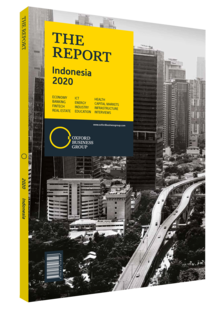This chapter includes the following articles.
Construction & Real Estate

Indonesia’s economy averaged 6% annual GDP growth in the years following the 1997-98 Asian financial crisis. However, by 2013 approximately one-third of the budget was being channelled into unprofitable fuel subsidies at the expense of infrastructure development. This meant that industry and transportation did not develop in line with economic gains, stunting growth of the construction sector in turn. Moreover, a deceleration in economic growth in 2014-15, coupled with rising property prices, ignited fears of a property bubble. This prompted the central bank to impose higher interest rates and larger minimum down payments for mortgages, while also curtailing lending for second-home mortgages to prevent an accumulation of housing debt. However, a commodity price rebound in early 2019 saw several incentives introduced to reinvigorate the property market. These included lower interest rates, a relaxed loan-to-value ratio and smaller minimum down payments, while mortgage lenders also implemented schemes to entice the growing young middle class. This chapter contains interviews with Wong Heang Fine, Group CEO, Surbana Jurong; and Niko Safavi, President Director, Mowilex Indonesia.


